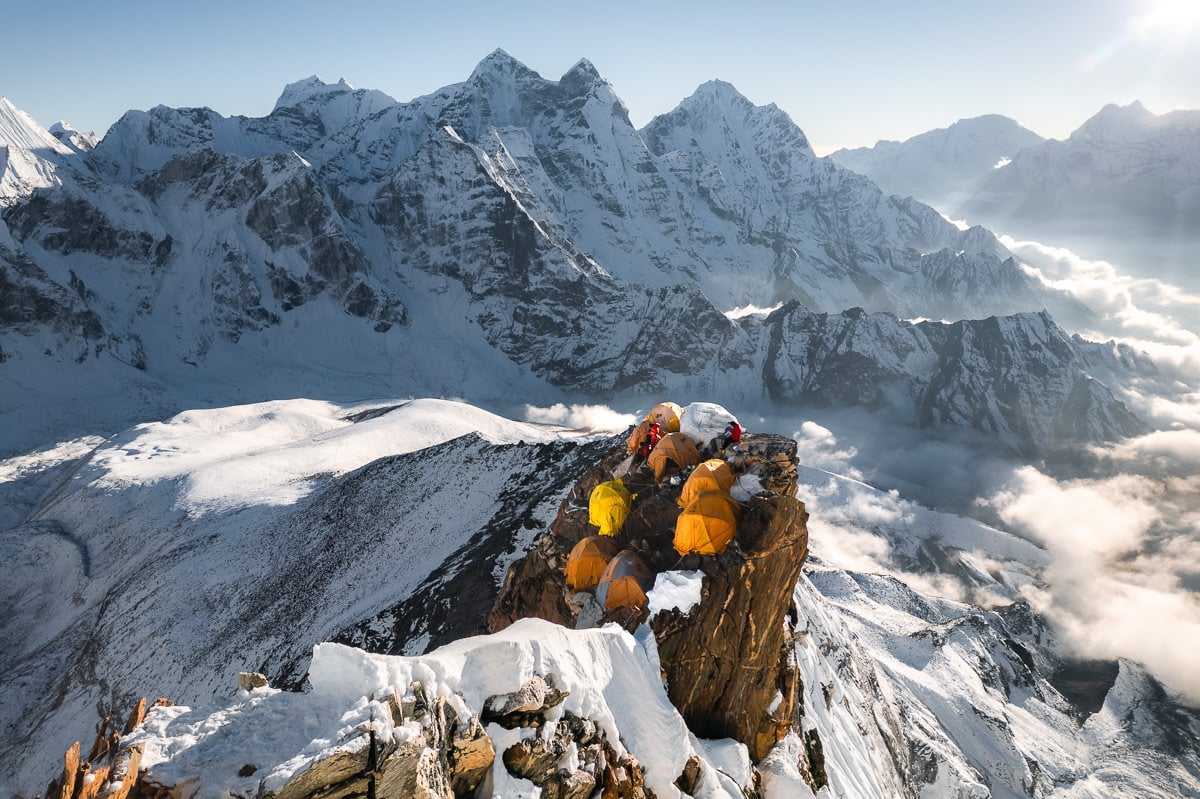There are many different ways to acclimatize for Ama Dablam (6,812m). Some people trek in, some make several journeys up to the lower camps and some don’t bother to acclimatize at all. Our plan was to sleep one night at Camp One and spend another up at Camp Two. We had previously been up on Manaslu a month earlier and took oxygen around 7000m. Therefore, maybe we had some lasting acclimatization from that prior climb. Regardless of the acclimatization, I was looking forward to getting up on the mountain, tackling the ‘Yellow Tower’, and spending a night at the iconic Camp Two.
We began the trek up to Camp One in the late morning. The route involves 1,100m of incline and takes you up to about 5,600m of elevation. Depending on the snowfall, you can quite easily make it up to Camp One and even Camp Two in regular trekking boots. The trail leads you up and over the hills and winds you around the right side of Ama Dablam to join the Southwest Ridge. It’s not tough terrain but you are reaching higher elevation and it can be quite exposed to the sun or wind, which can make it a fatiguing journey. It takes most people about 4-5 hours although slower hikers can take upwards of six hours. Constant views of the peak and a promise of a hot meal at Camp One kept us moving at a good pace.
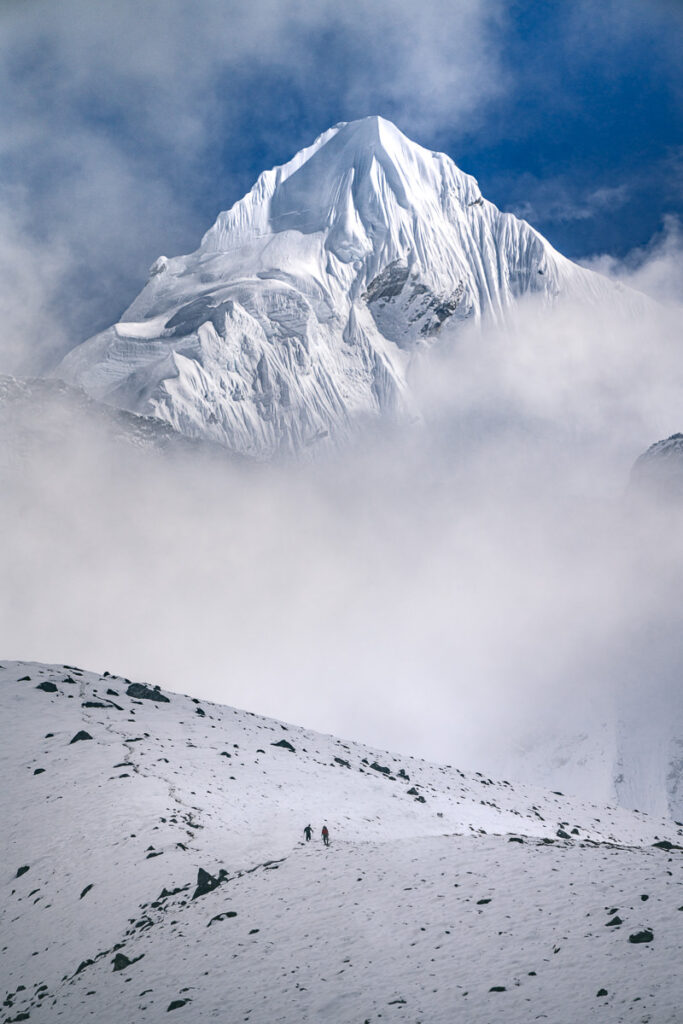
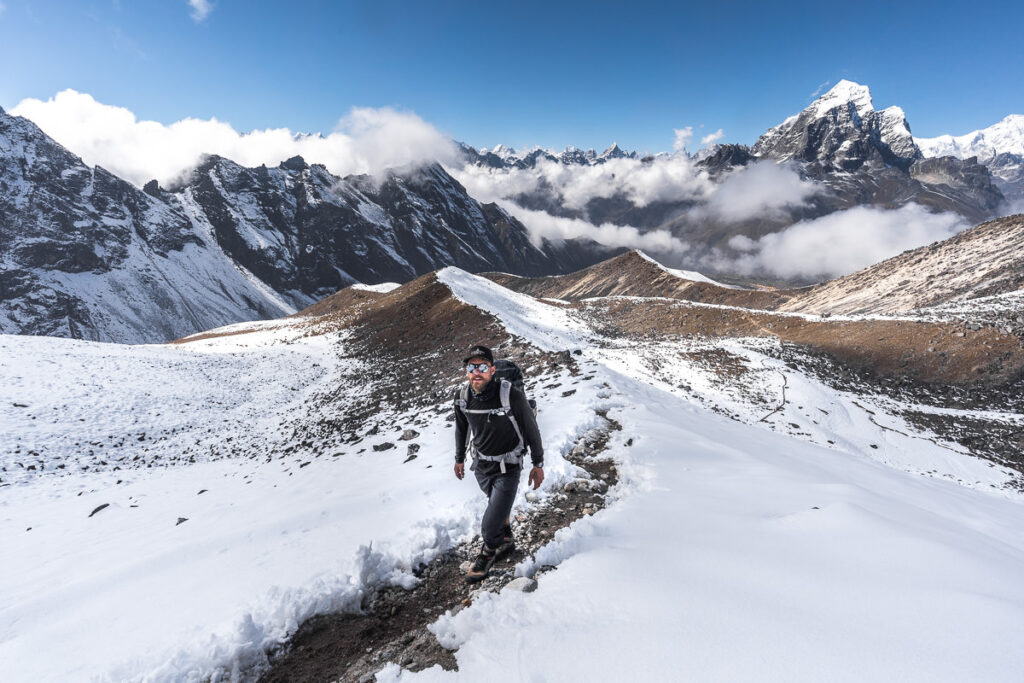
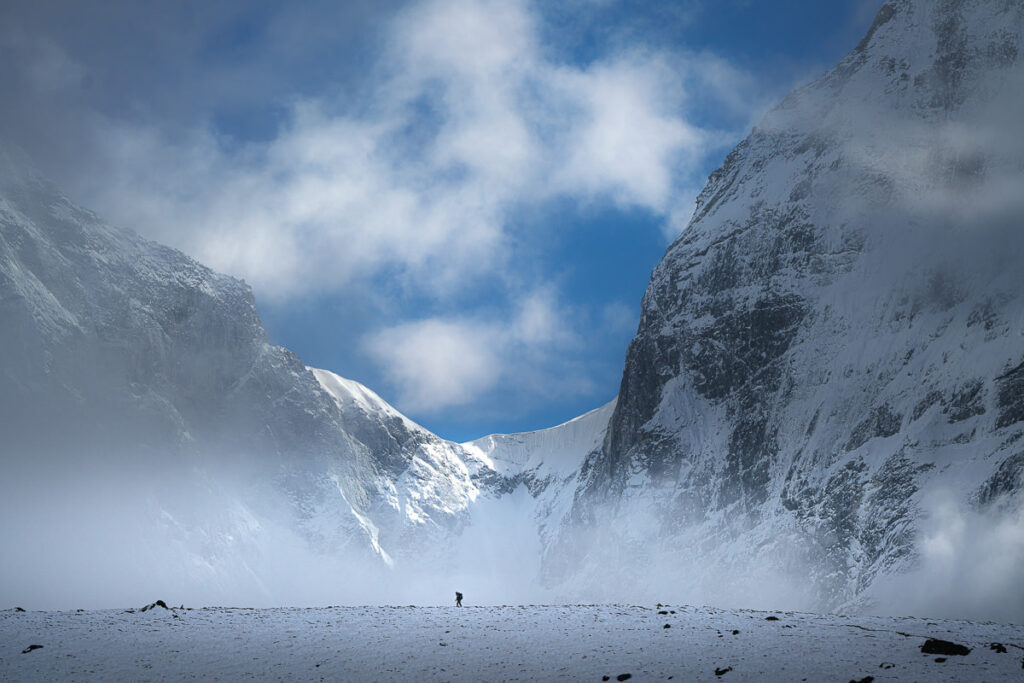
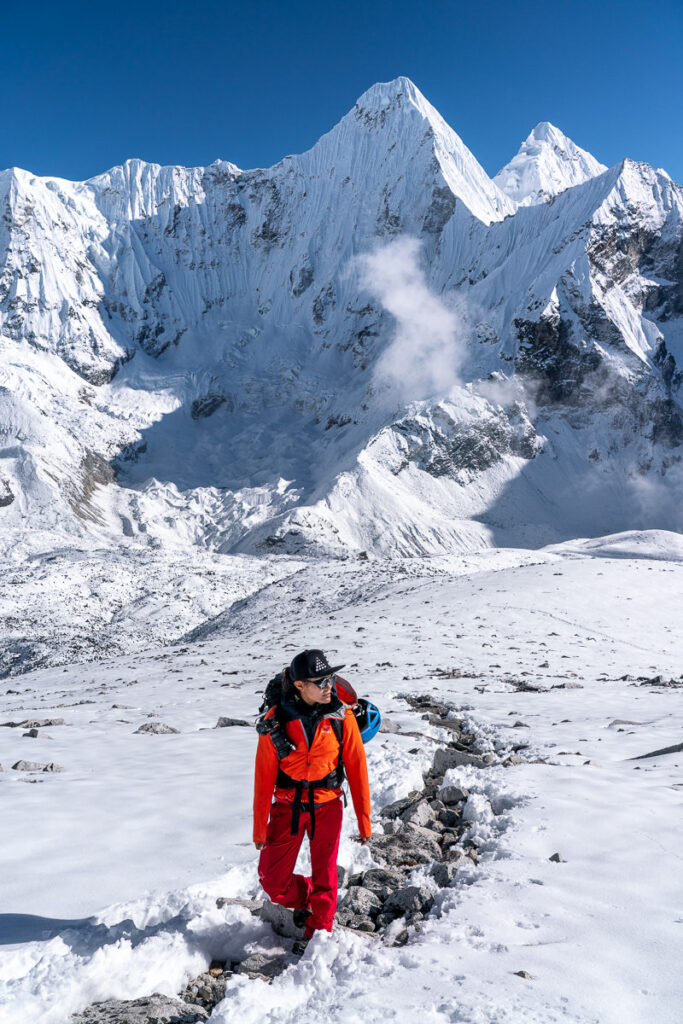
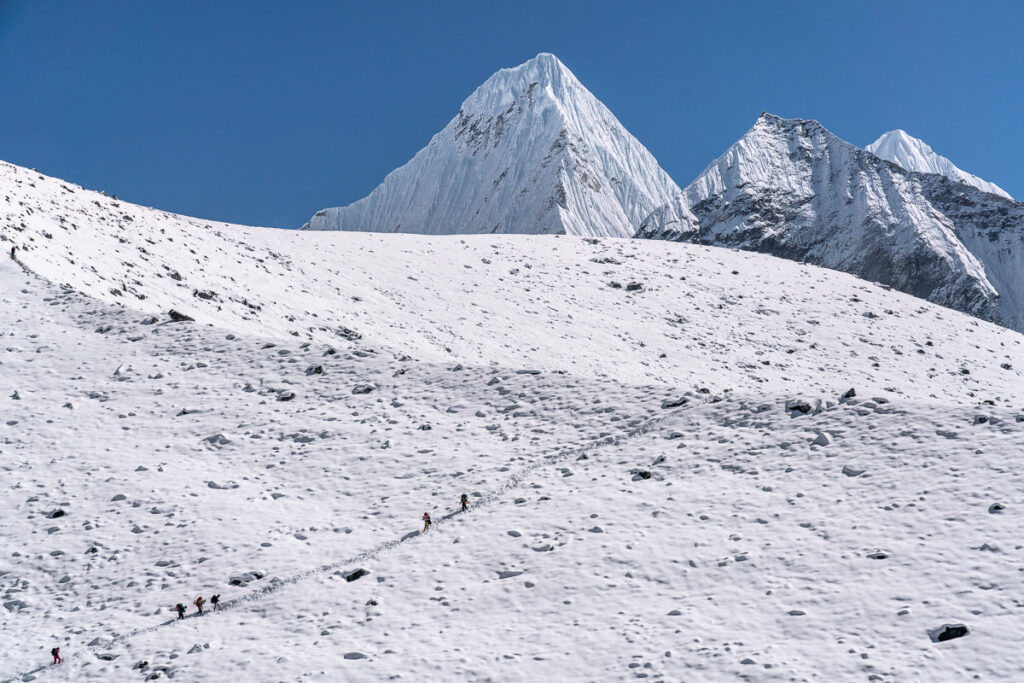
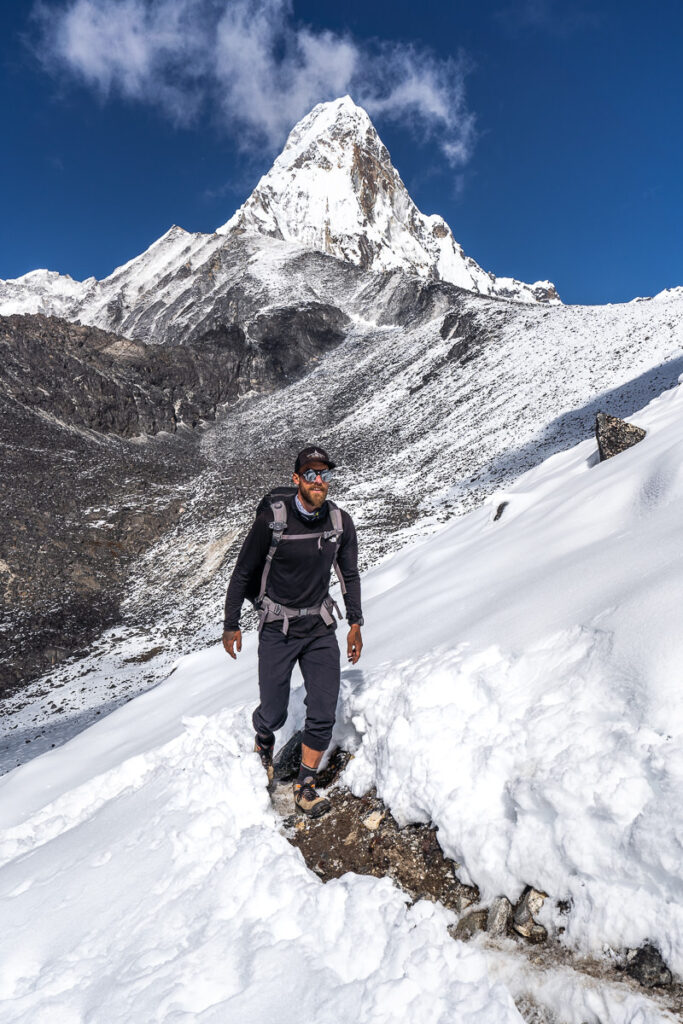
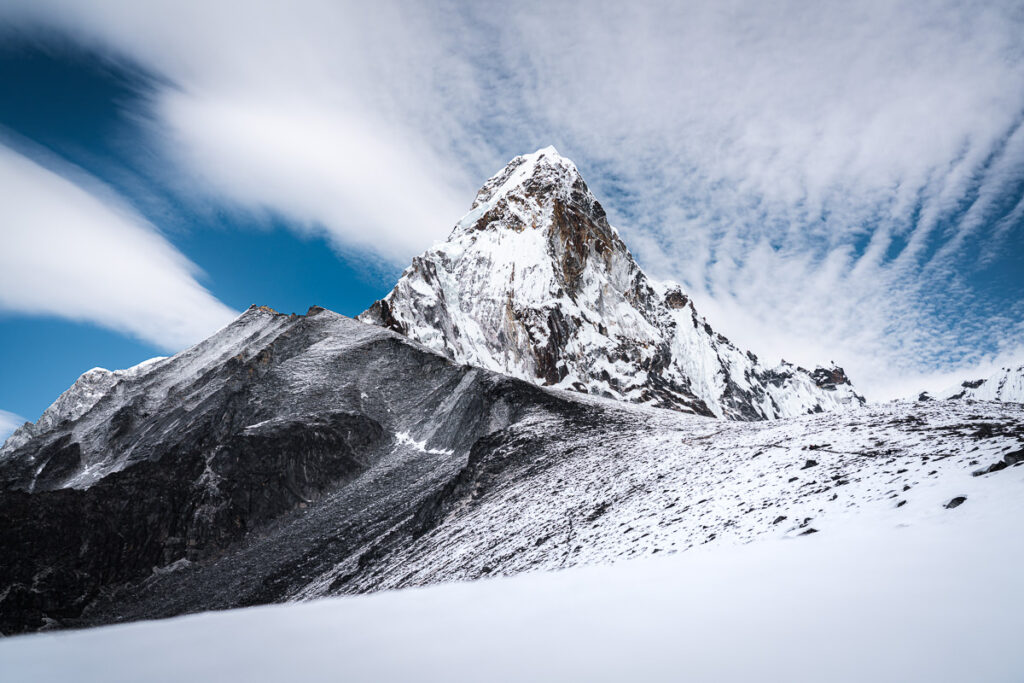
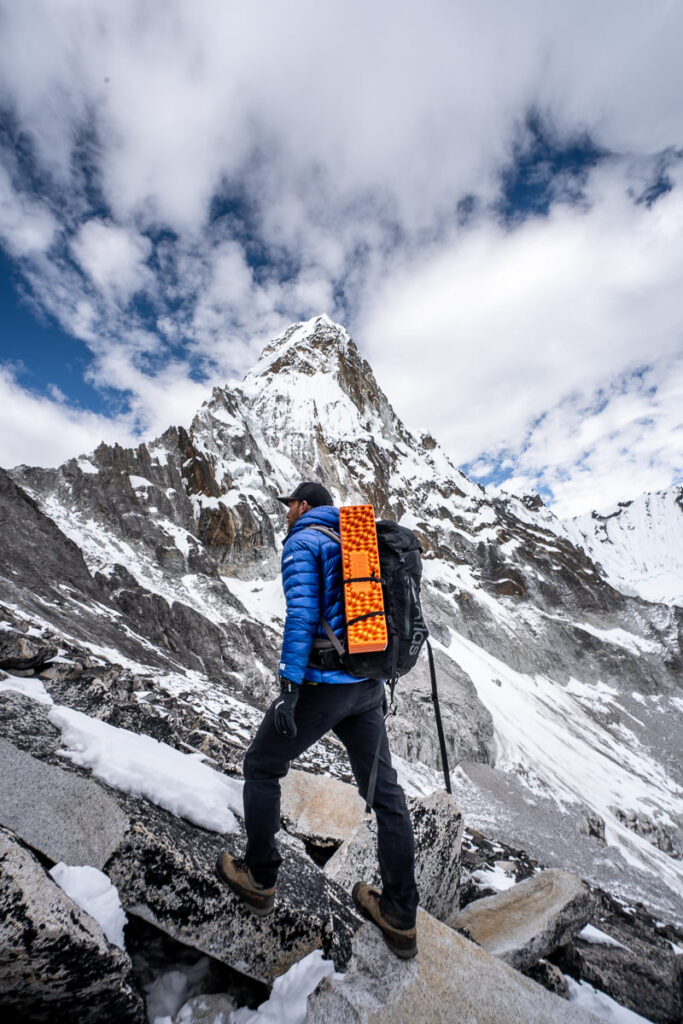
Camp One is not as famous as the iconic Camp Two on Ama Dablam. However, it’s pretty impressive sitting right at the start of the Southwest Ridge. Looking up towards the summit from Camp One, you can see directly up the route and start to visualize your journey for the next day. Down below, views of the base camp are great if the highly probable cloud inversion of the afternoon doesn’t roll in to block the view. We had a stunningly still night with pastel sunsets and a Dhal Bat to top off the evening.
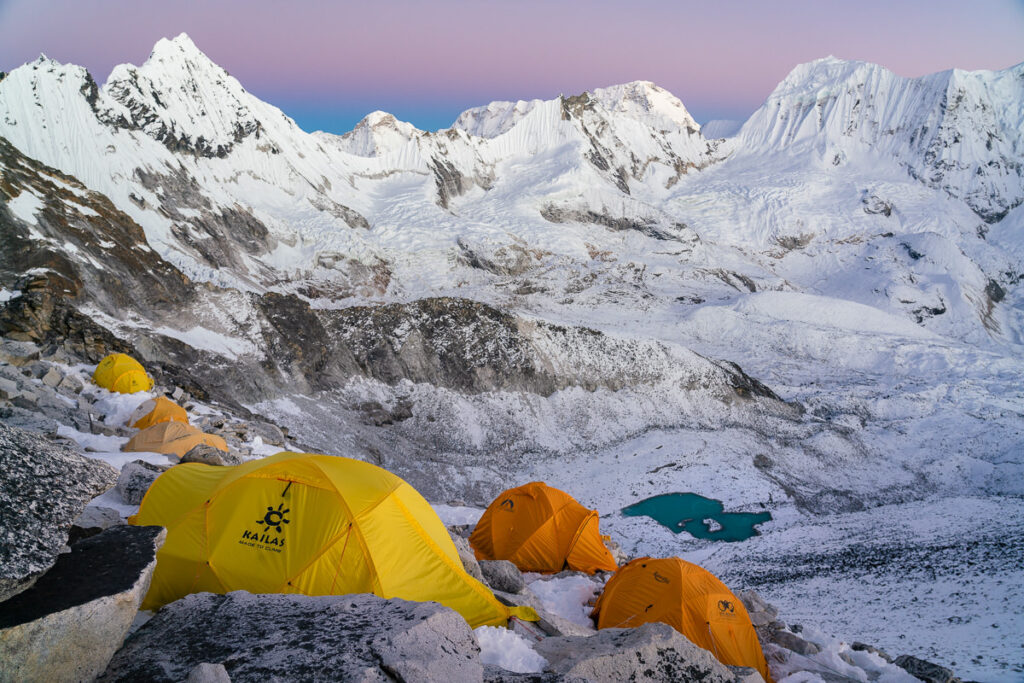
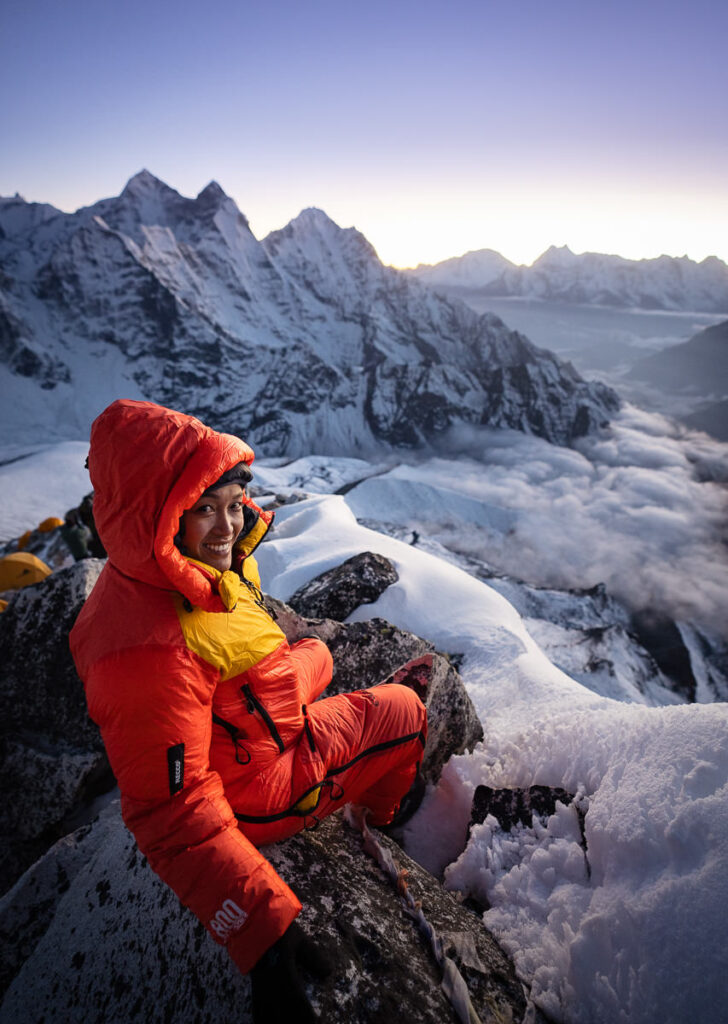
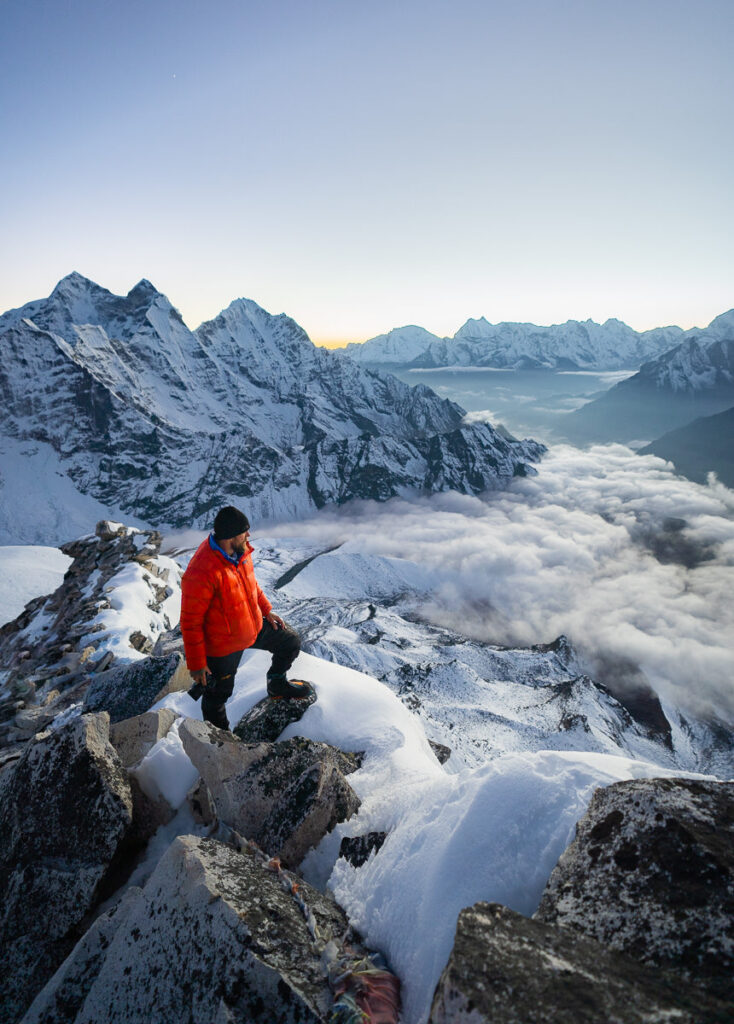
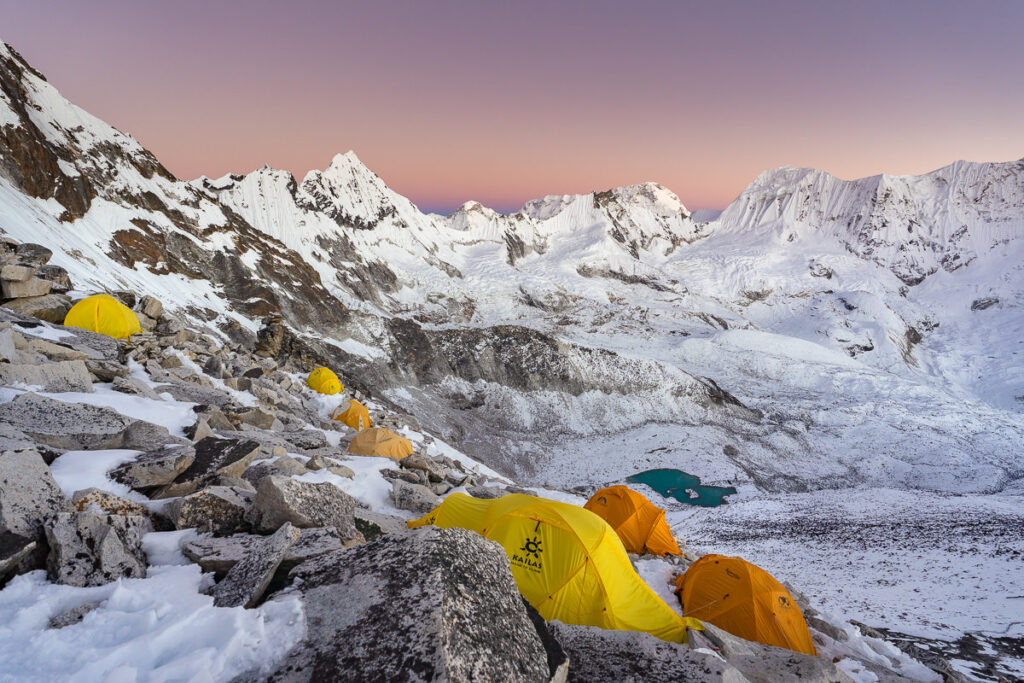
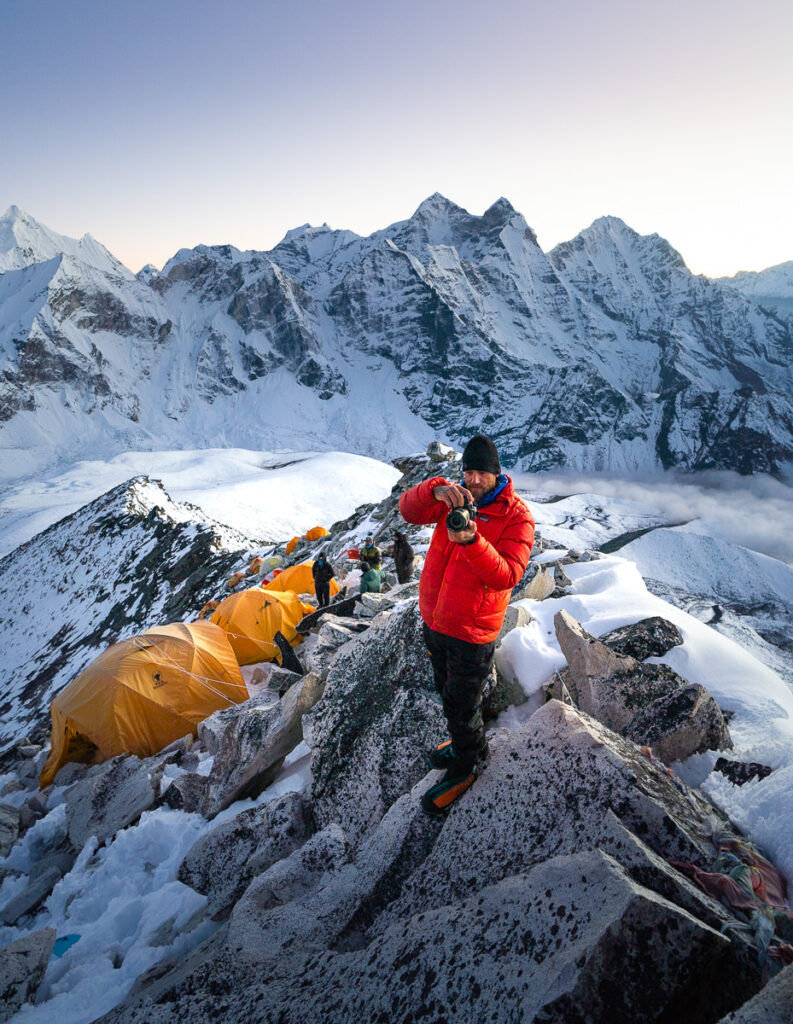
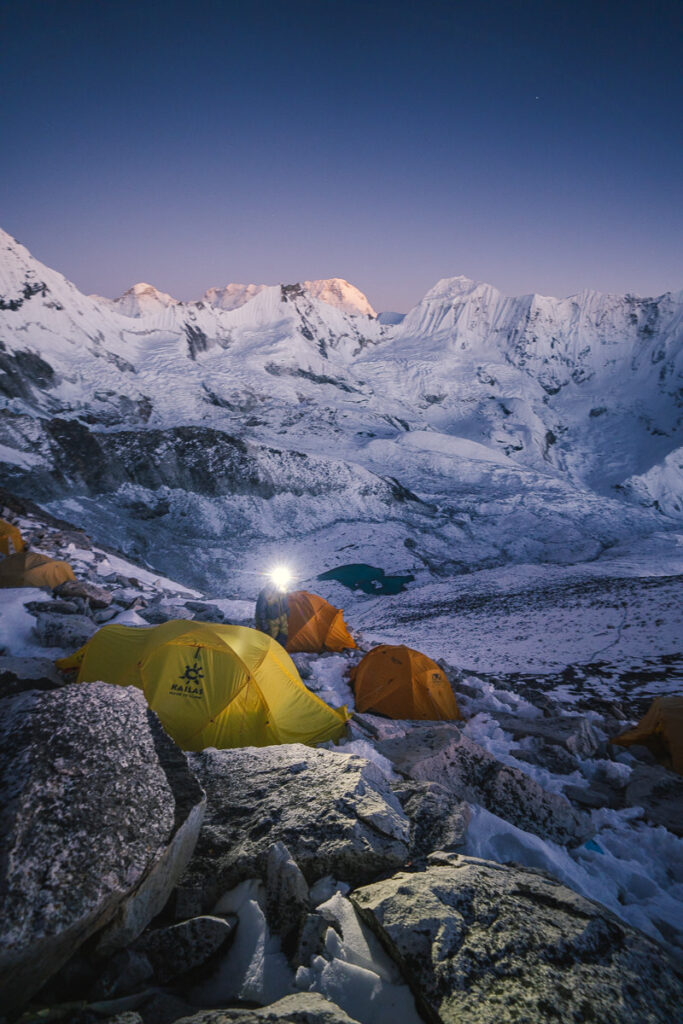
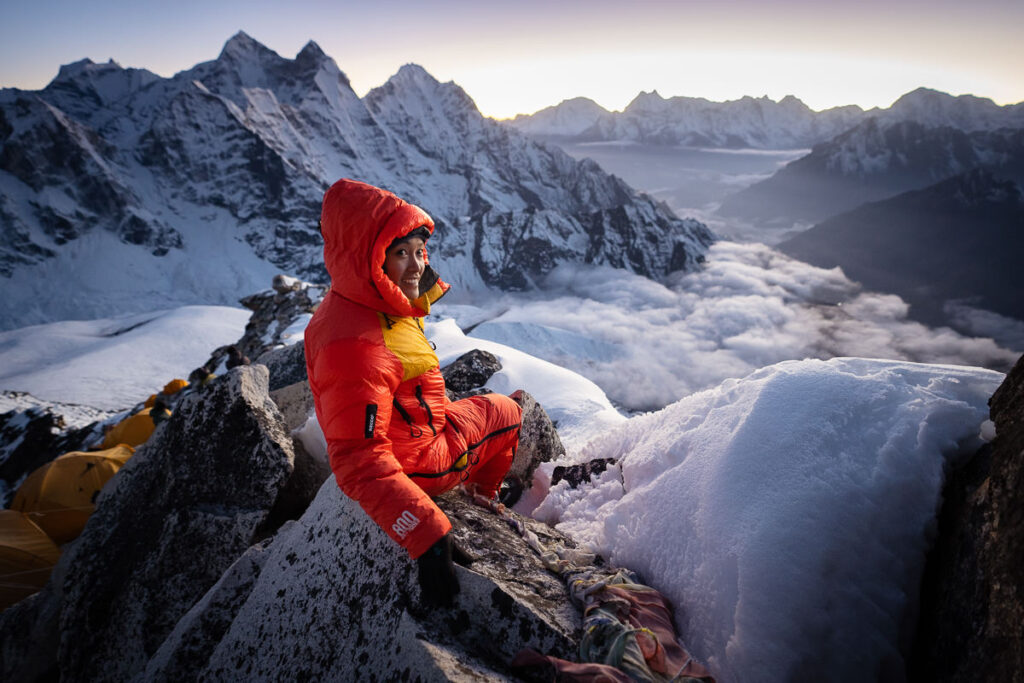
I won’t lie, the sleep at Camp One wasn’t great. Not because of altitude sickness but the uneven rocky surface is rough. We were told just to bring a sleeping pad, but an inflatable mat would go a long way at these campsites on Ama Dablam. Nevertheless, we woke up to a beautiful sunrise and had a quick drone flight above Camp One, capturing the first light hitting the peak. There were some cold fingers for this flight.
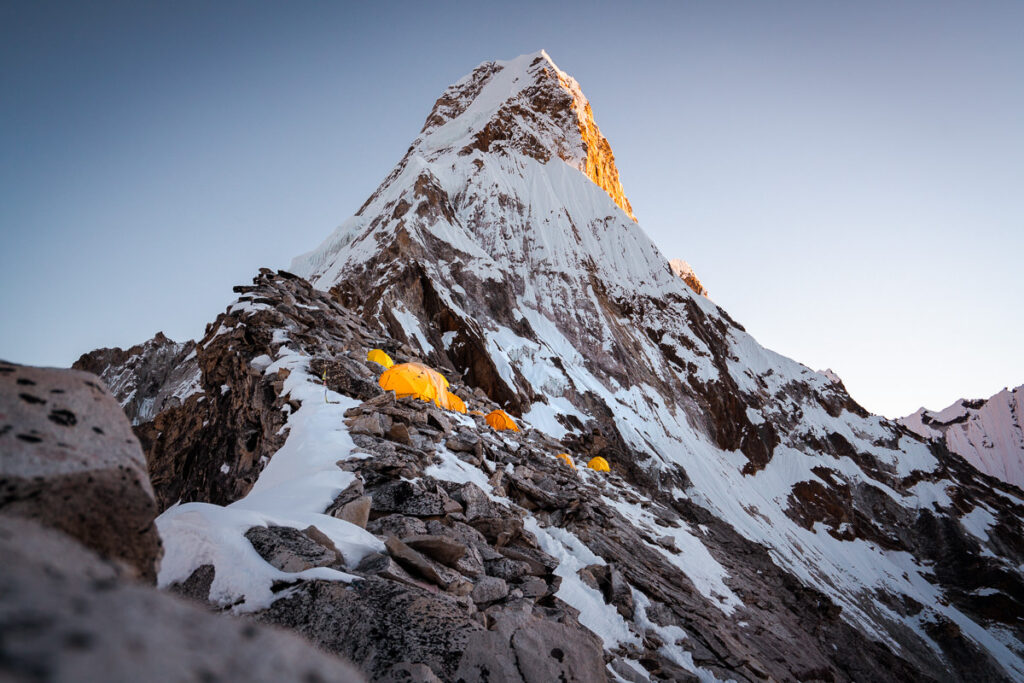
The mission for today was to reach Camp Two after tackling the Yellow Tower. We had heard a lot about how technical this mountain was and that the Yellow Tower was a big test. As soon as you leave Camp One you clip into the fixed line and you will be clipped in until you return all the way from the summit. This makes the climb relatively safe. The route begins with some basic traverses on the underside of the ridge before you criss-cross your way up and over with some simple jumar work.
The difficulty of a climb is always relative to the climber, but I like to think of myself as a decent measuring stick for regular climbers. I have relatively low mountaineering experience but I am in quite good physical shape. I think a lot of hikers or beginner climbers can relate. I found the traversing quite basic and never felt under pressure. The main component to manage is the fear of heights with many of the sections involving a huge drop and heavy exposure. Hopefully, this extensive set of photos from Camp One to the Yellow Tower will give you an in-depth look at what to expect on this part of the route.
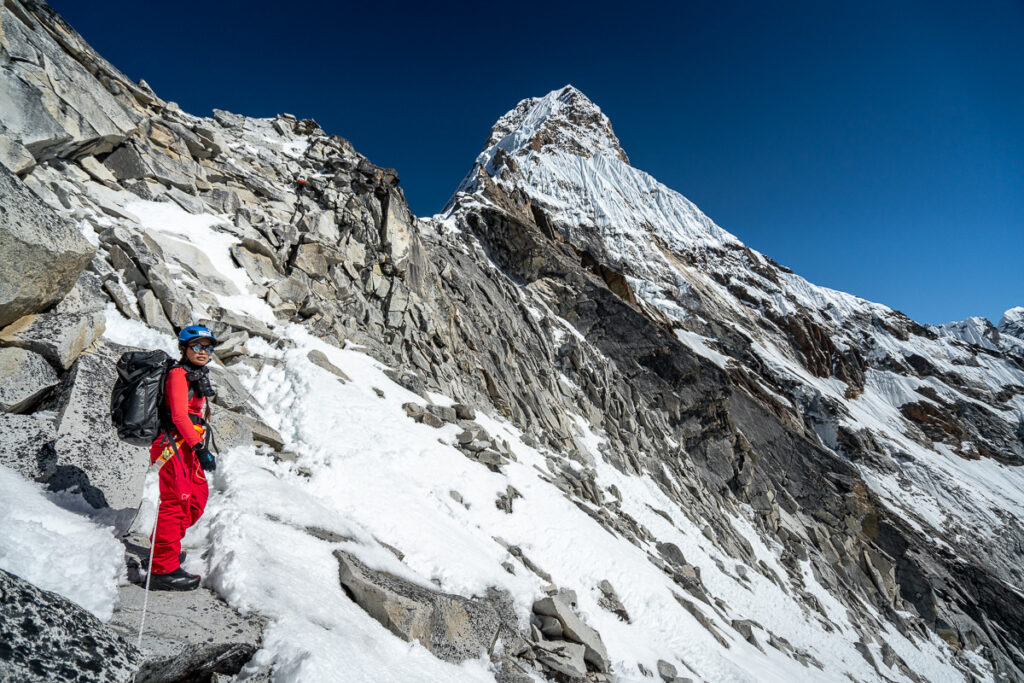
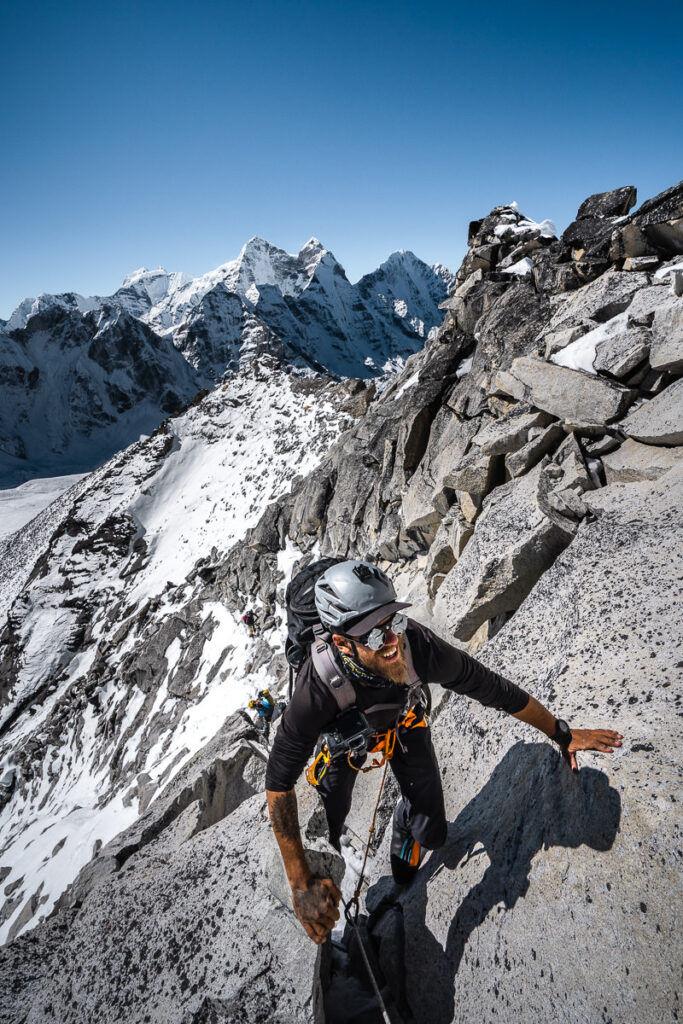
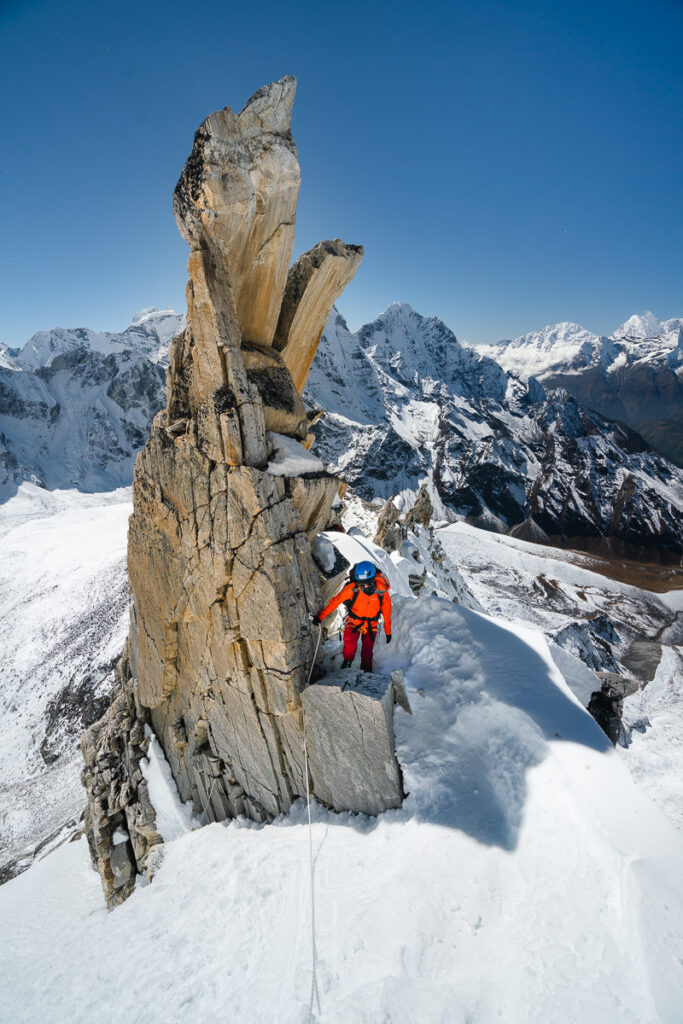
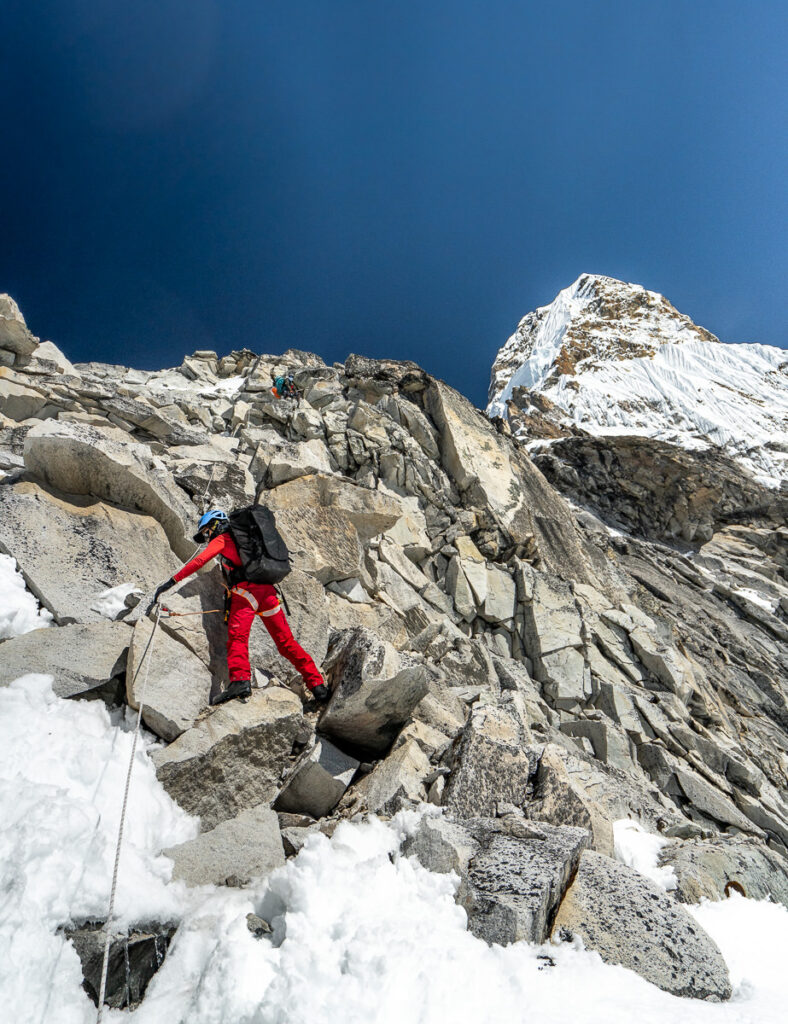
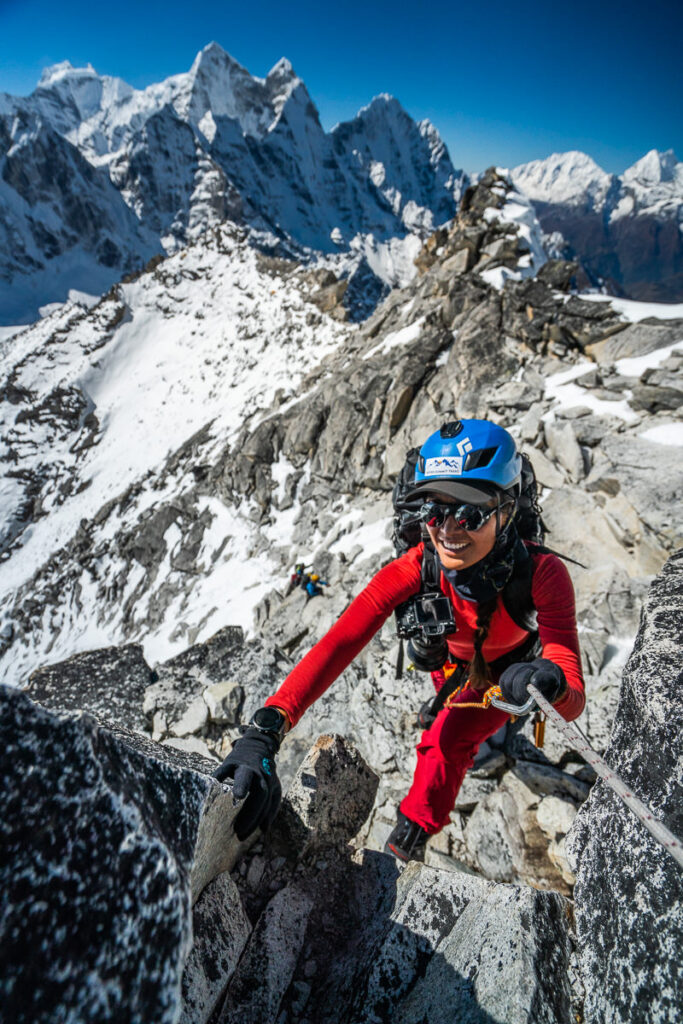
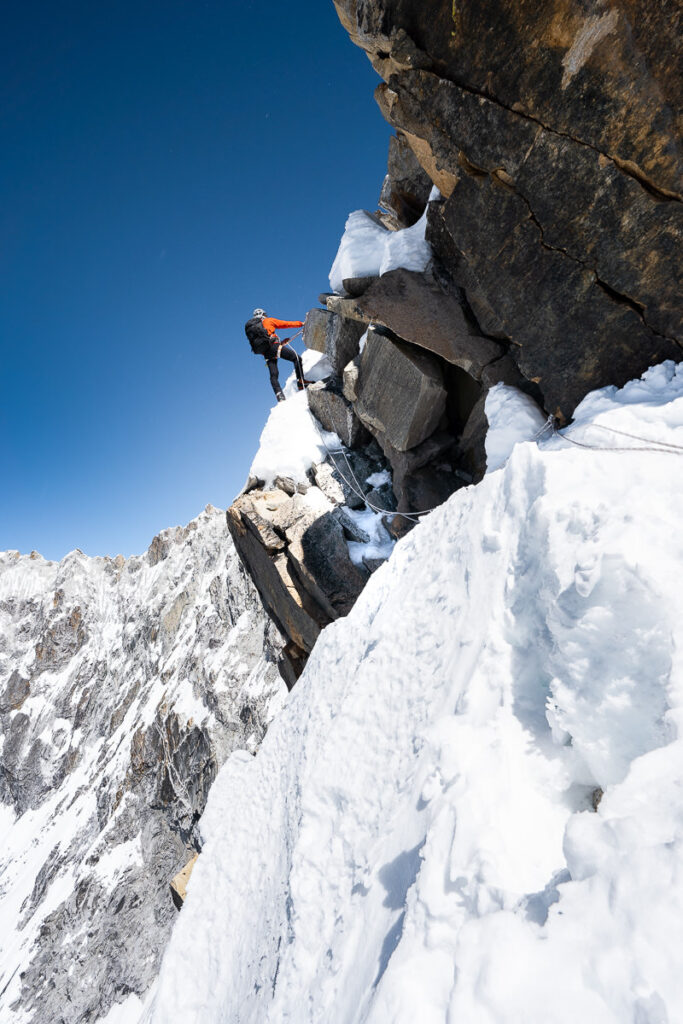
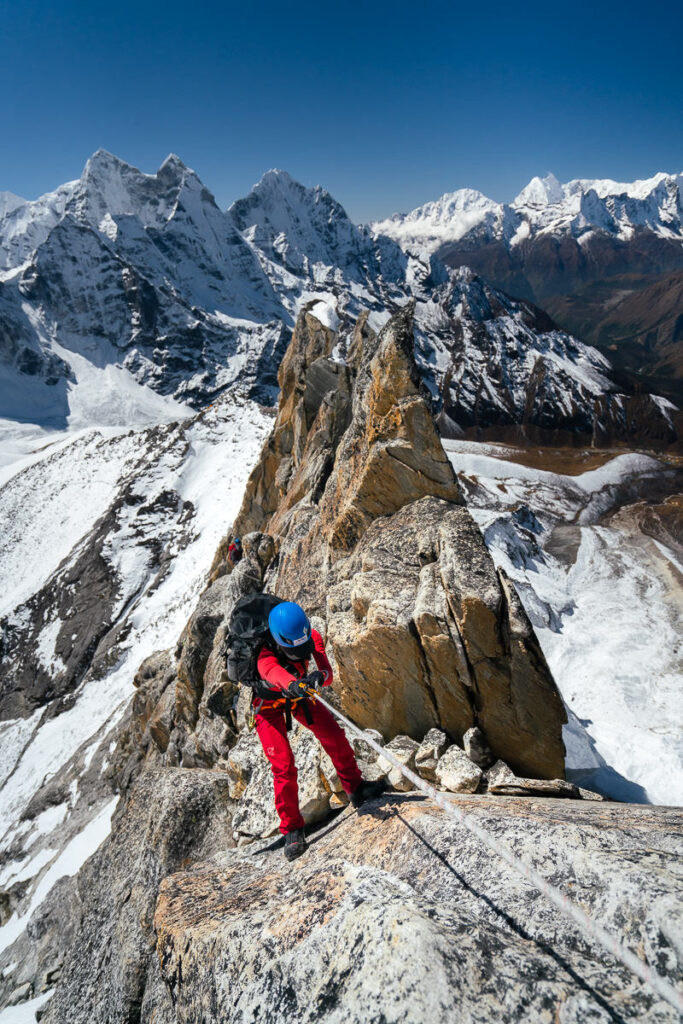
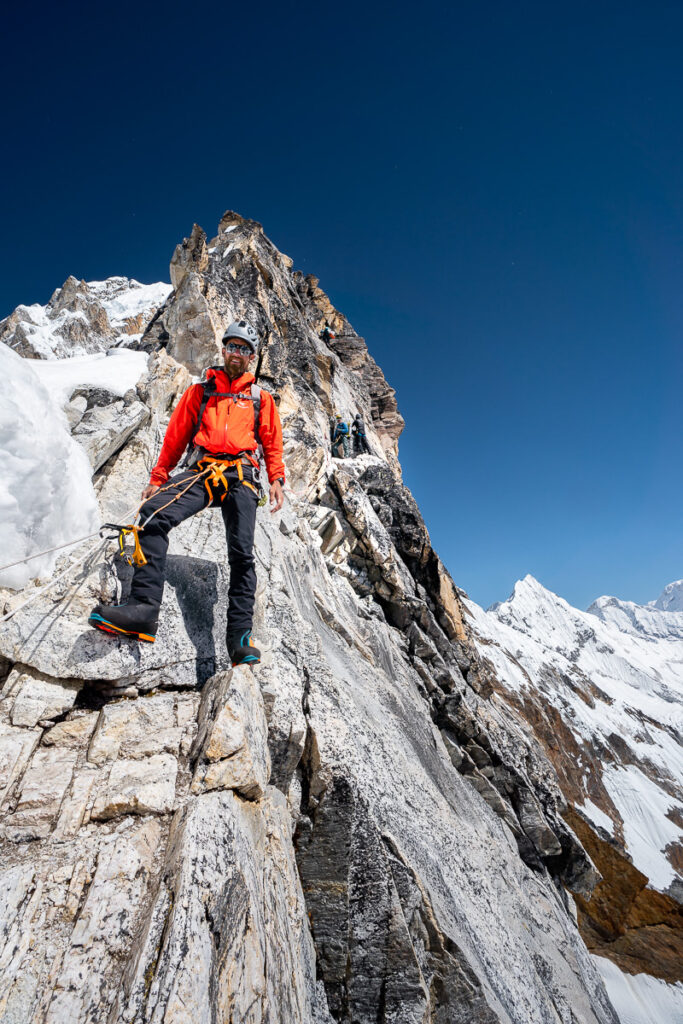
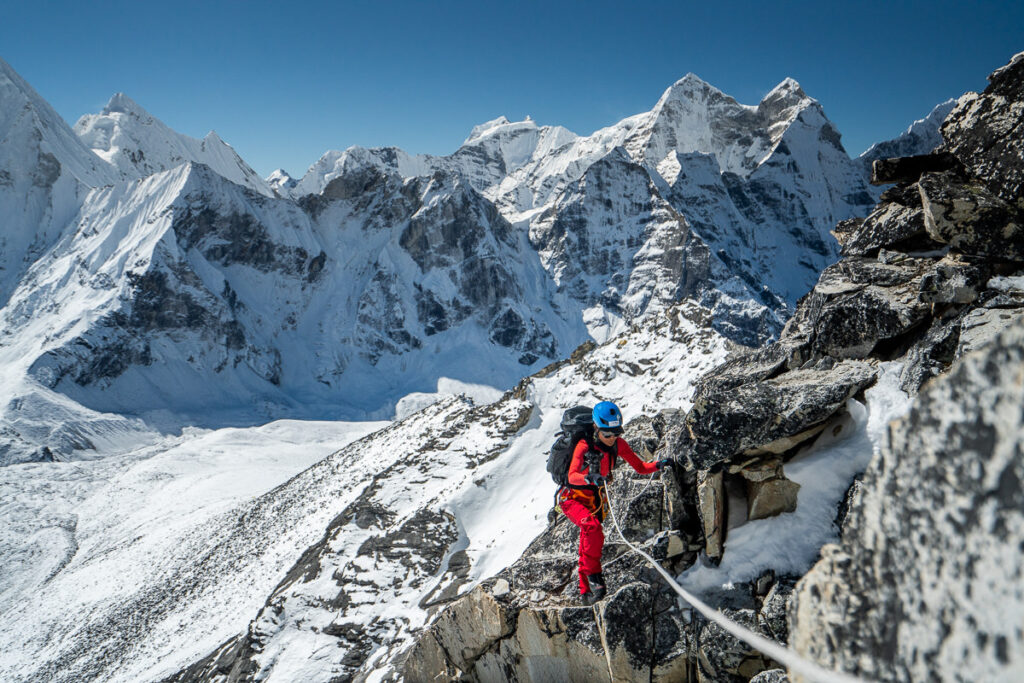
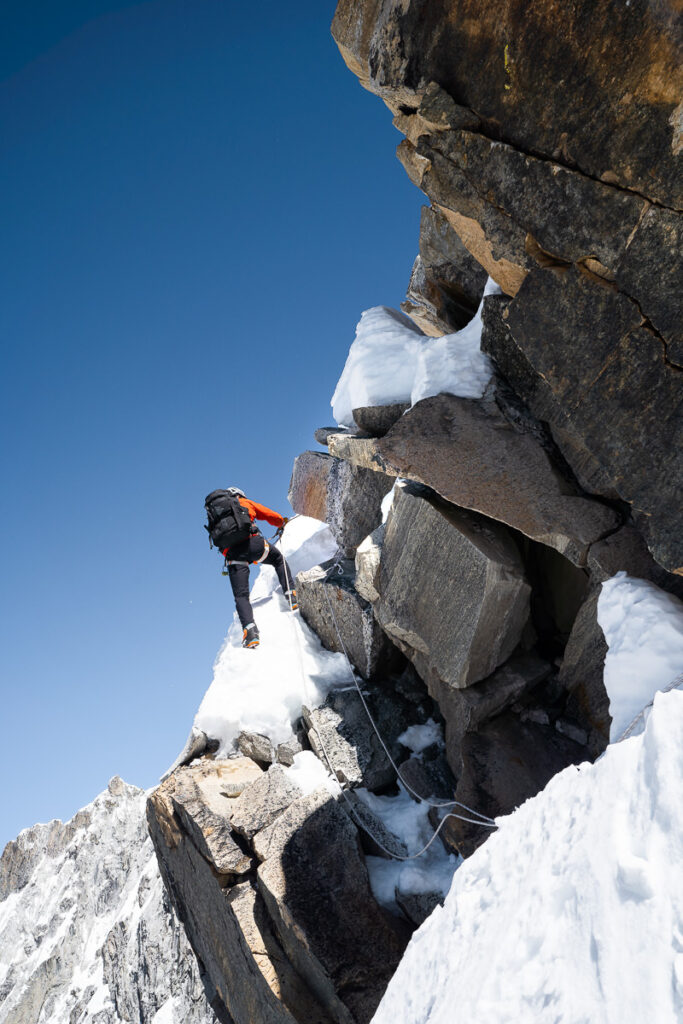
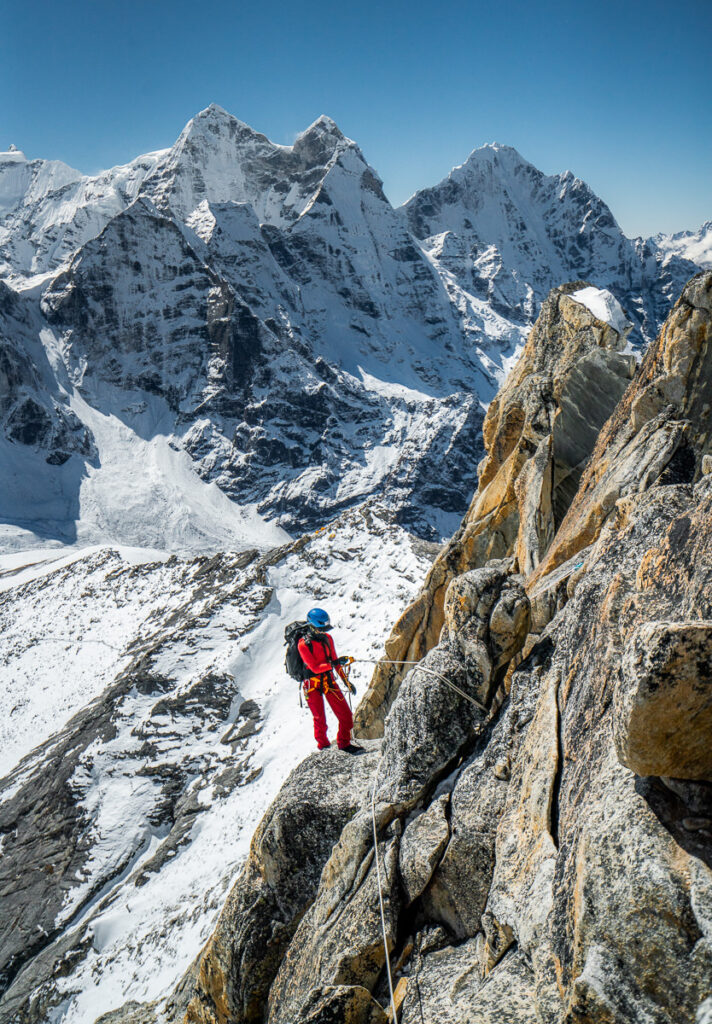
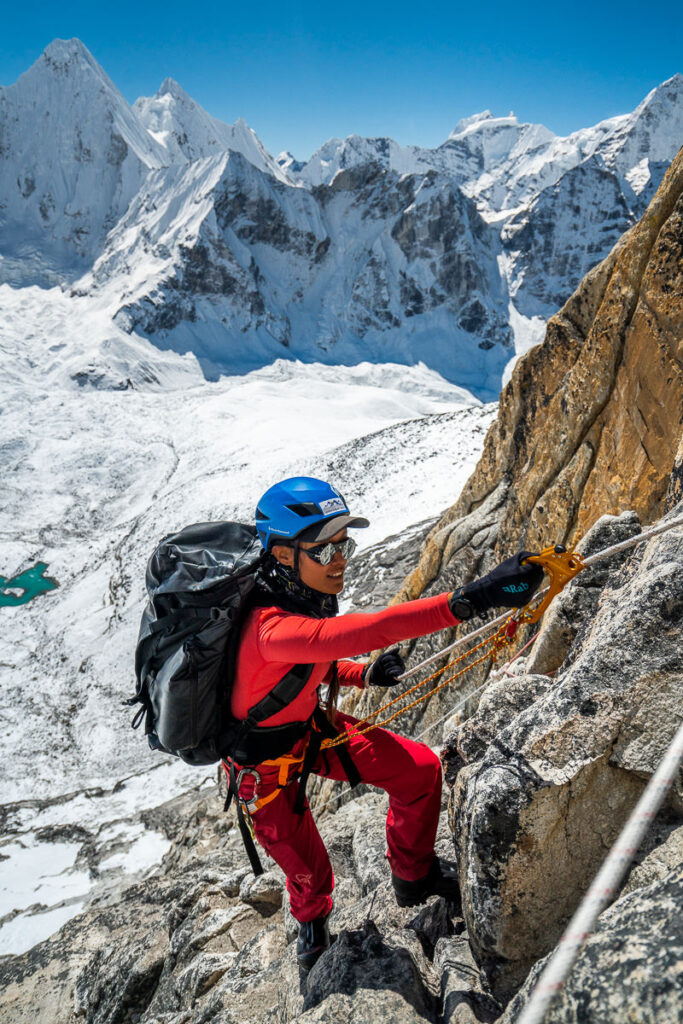
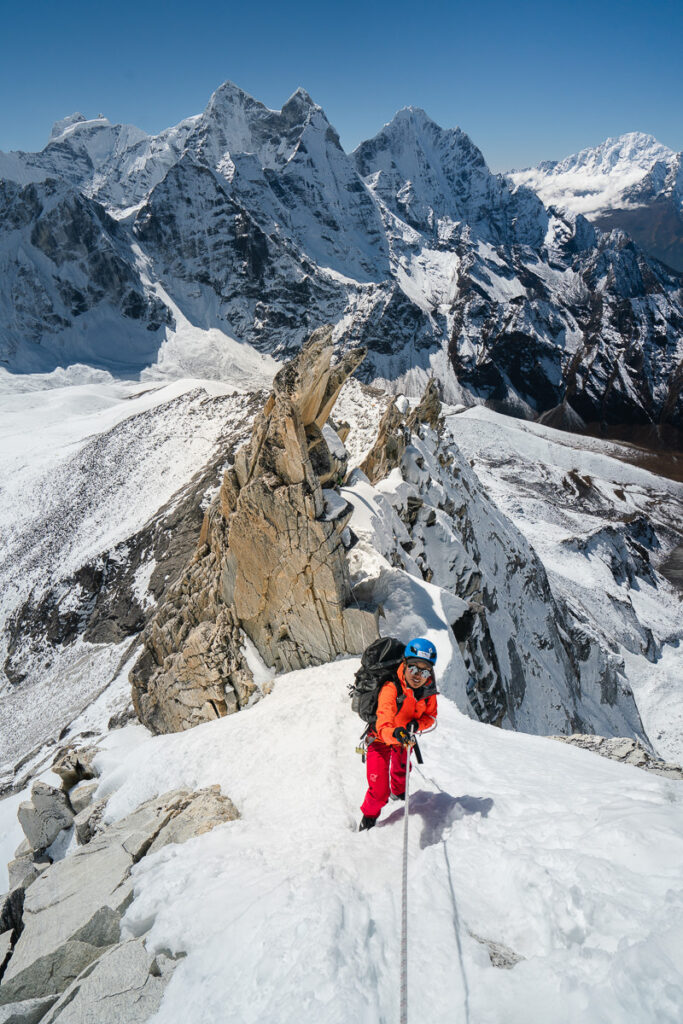
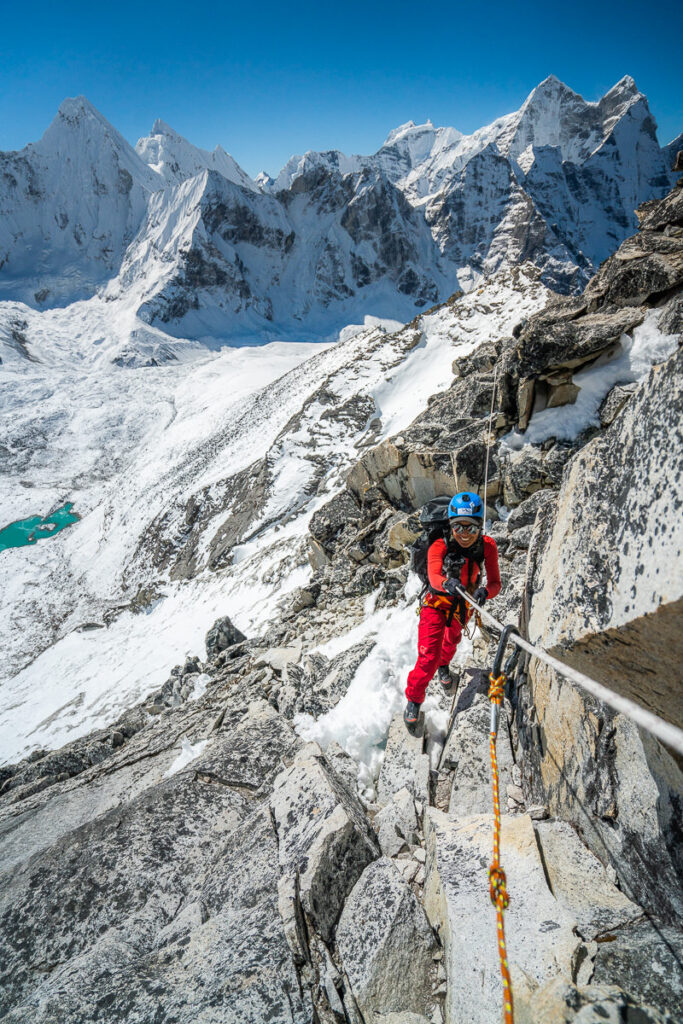
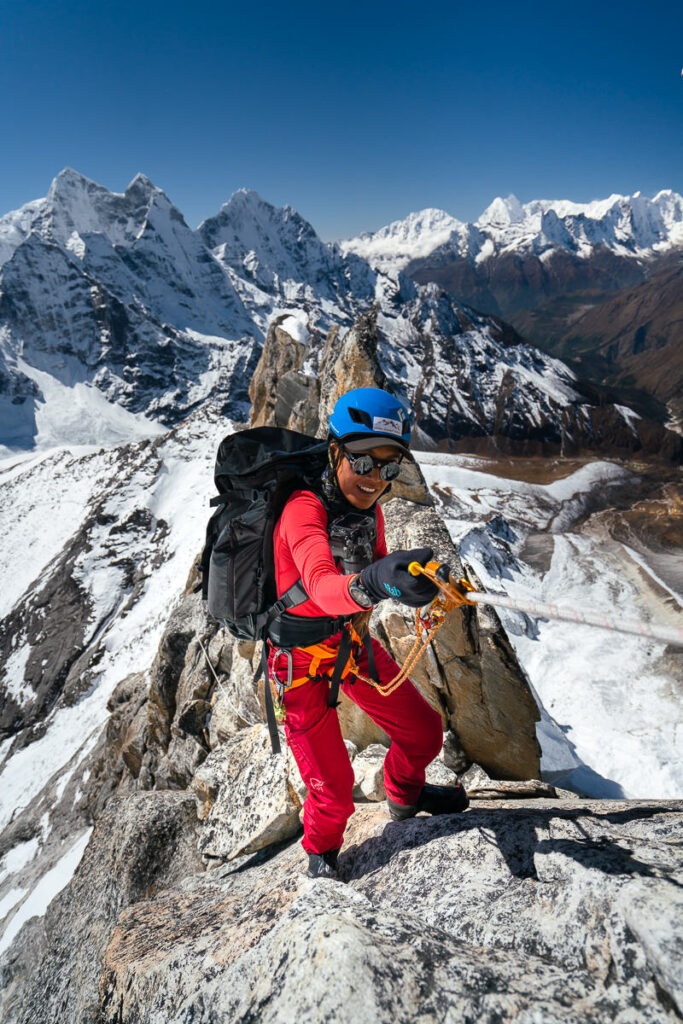
As we neared the Yellow Tower, I was quite surprised when our guide pointed it out. I expected the Yellow Tower to be much larger and seemingly more challenging. It ended up being much smaller and more manageable than expected. With the assistance of the jumar, it took just a few minutes to scale the steep, yellow wall. With good technique and upper body strength, this was far from a rock climb and more of a jumar ascent. However, the thousand-meter drop below was wildly exhilarating should you choose to look down.
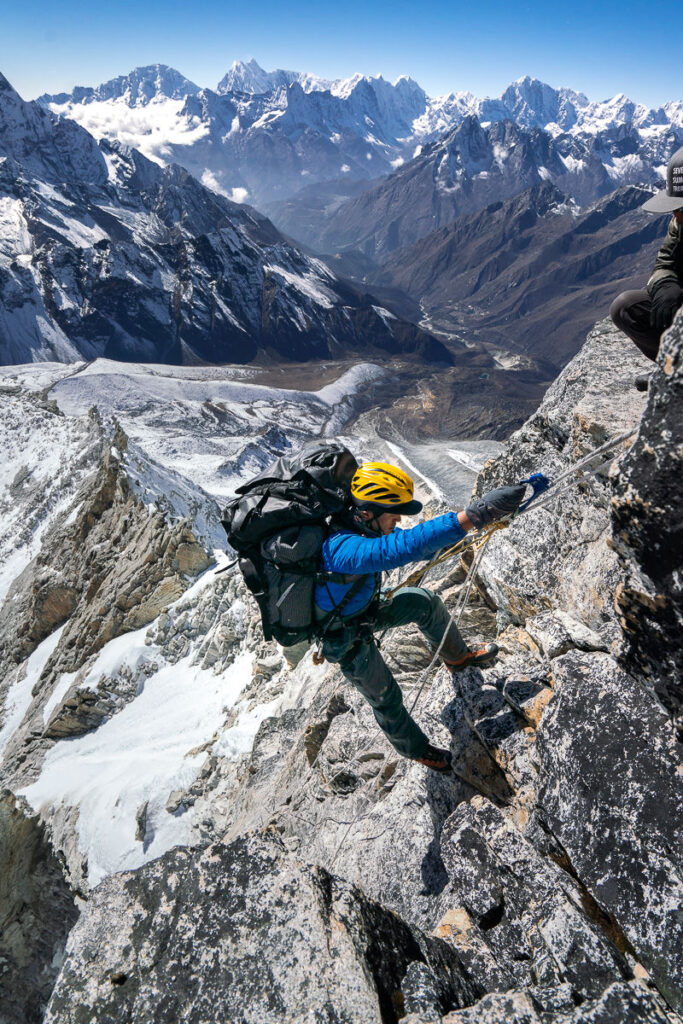
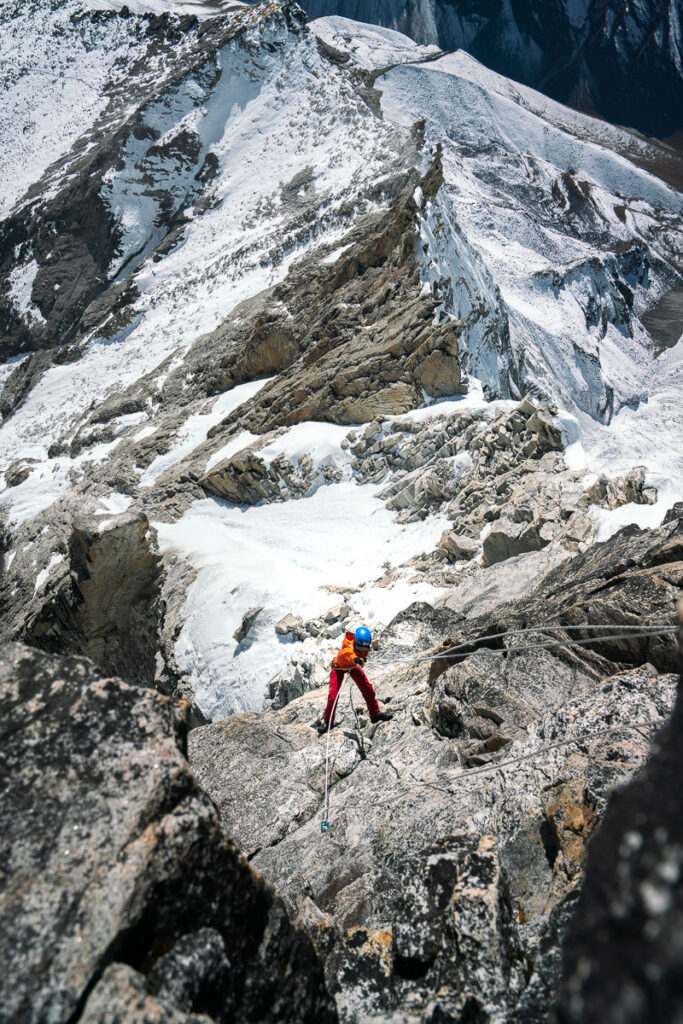
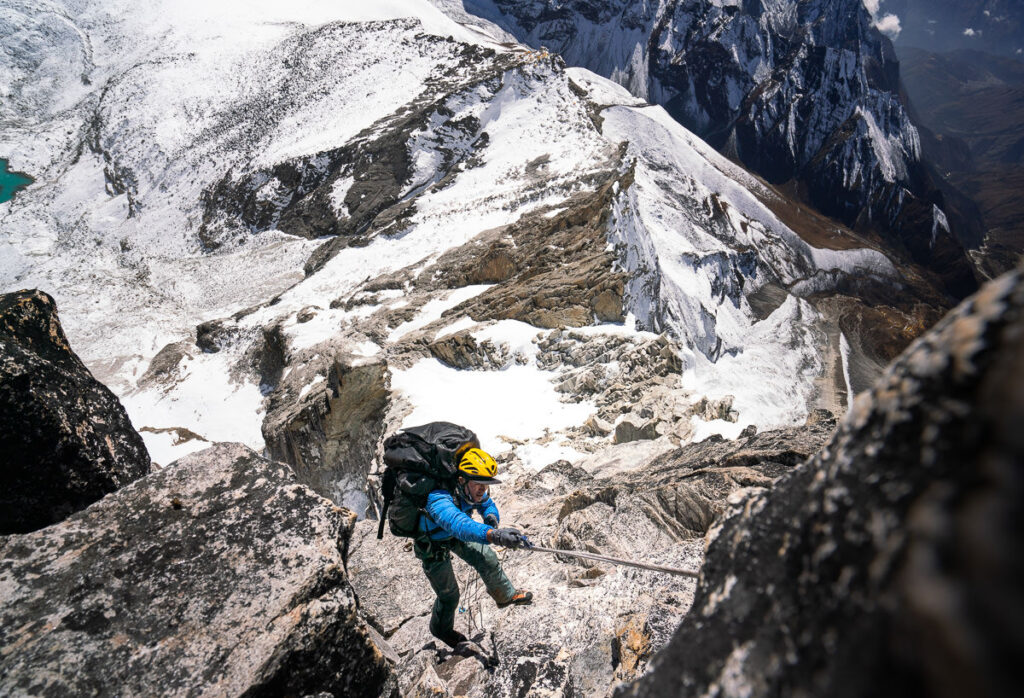
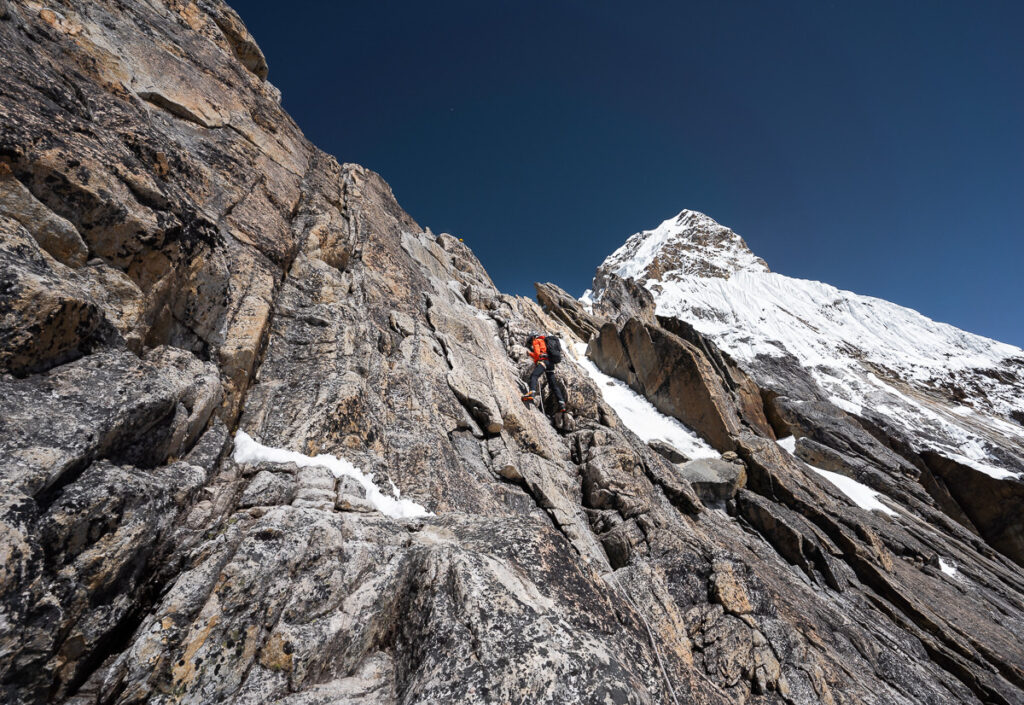
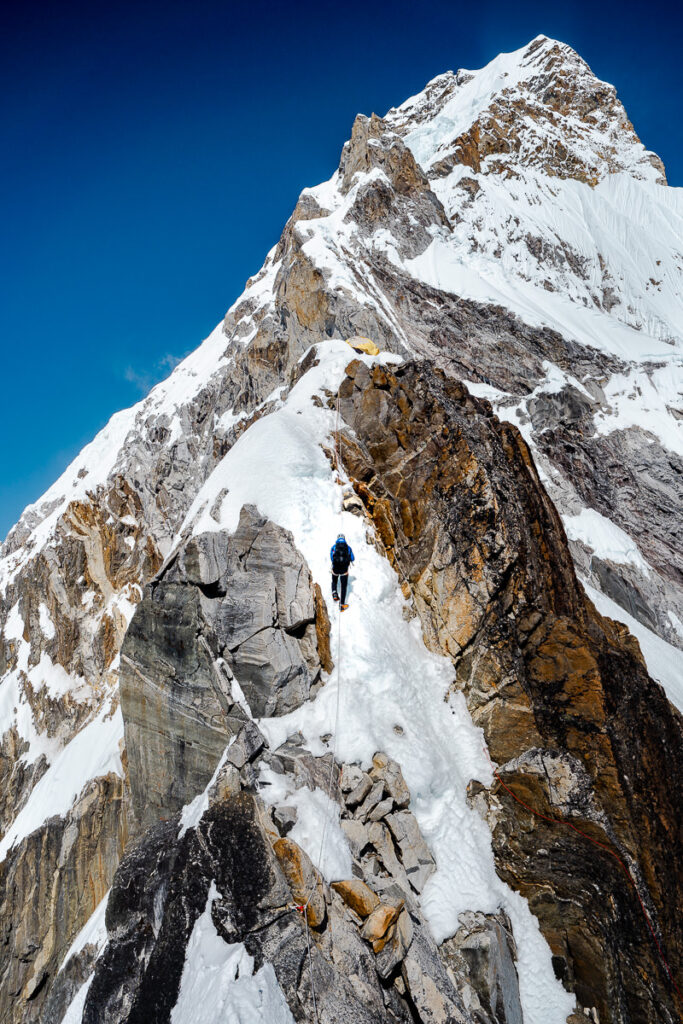
After conquering the Yellow Tower with our jumar, it was just a few minutes further to reach the iconic Camp Two. This cliffside campsite seems to be literally sliding off the angled rock into the abyss below. Tents are erected at unimaginable angles and fixed to the rock by ropes. Moving around the campsite often involves being clipped in. The views down to basecamp and beyond Pangboche are phenomenal from this camp, and spending a night up here was our best decision for the trip. Sleeping up here allowed us to get the golden hour in the evening and the following morning, which helped us create some unforgettable images. Here are a few of my favorites.
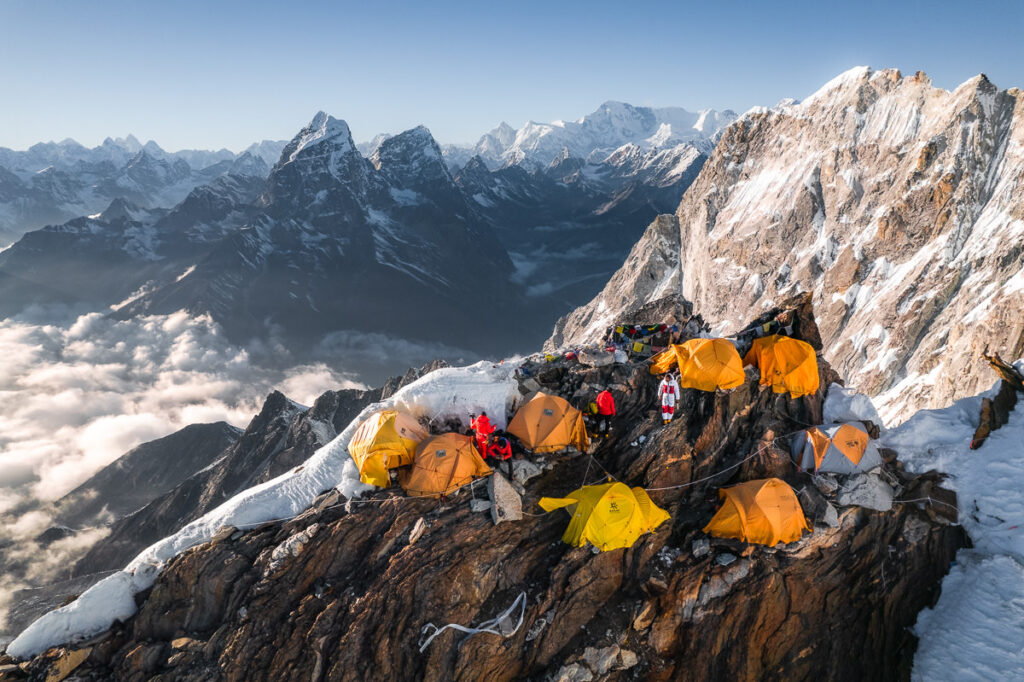

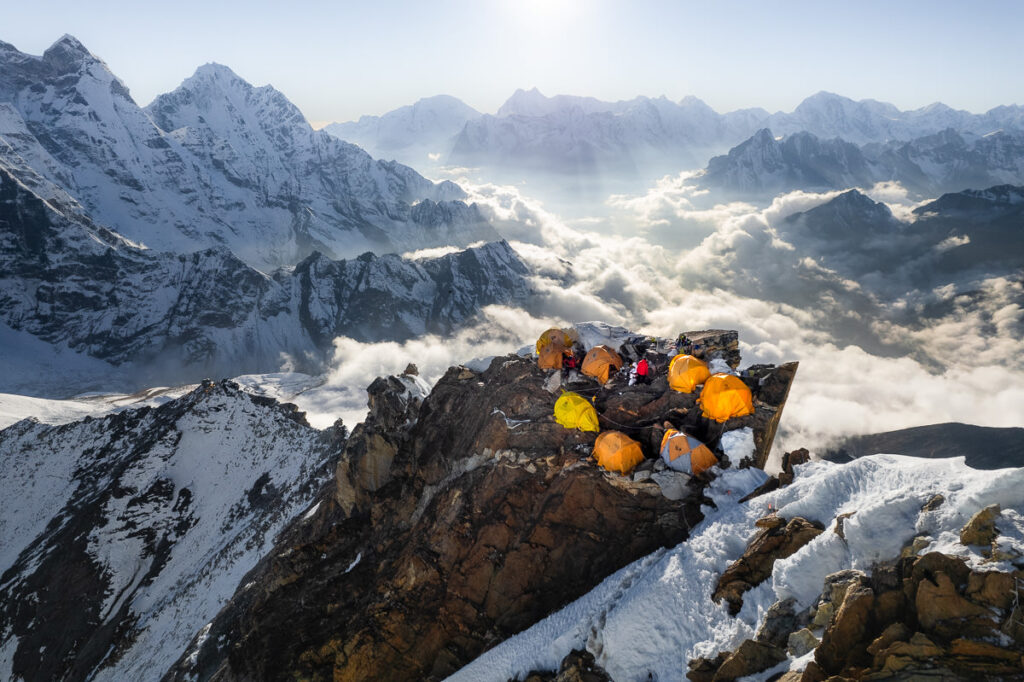
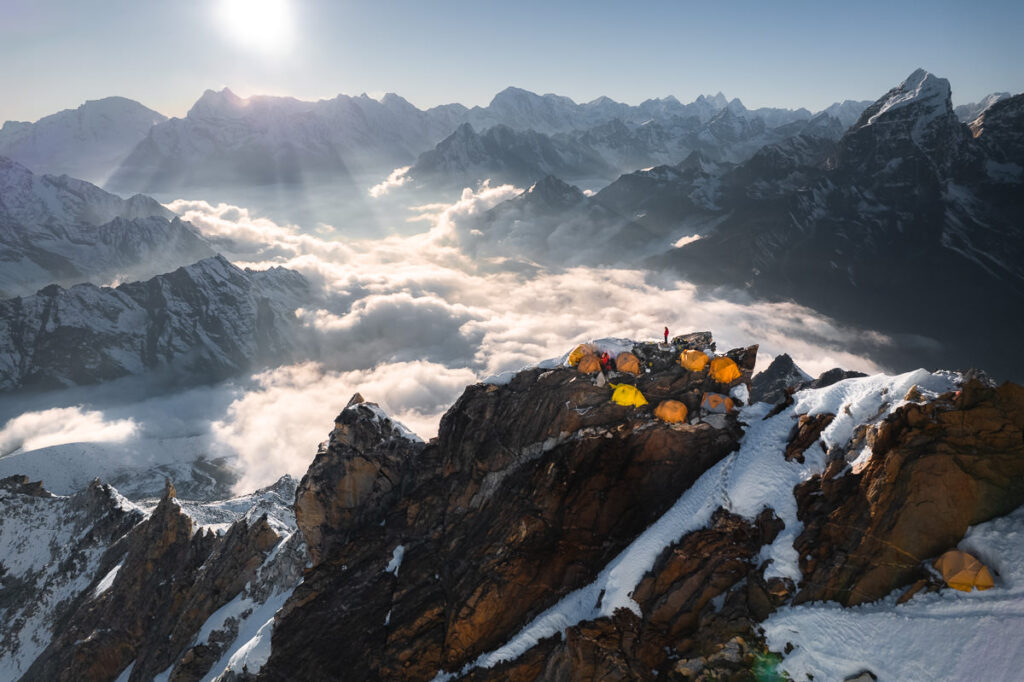
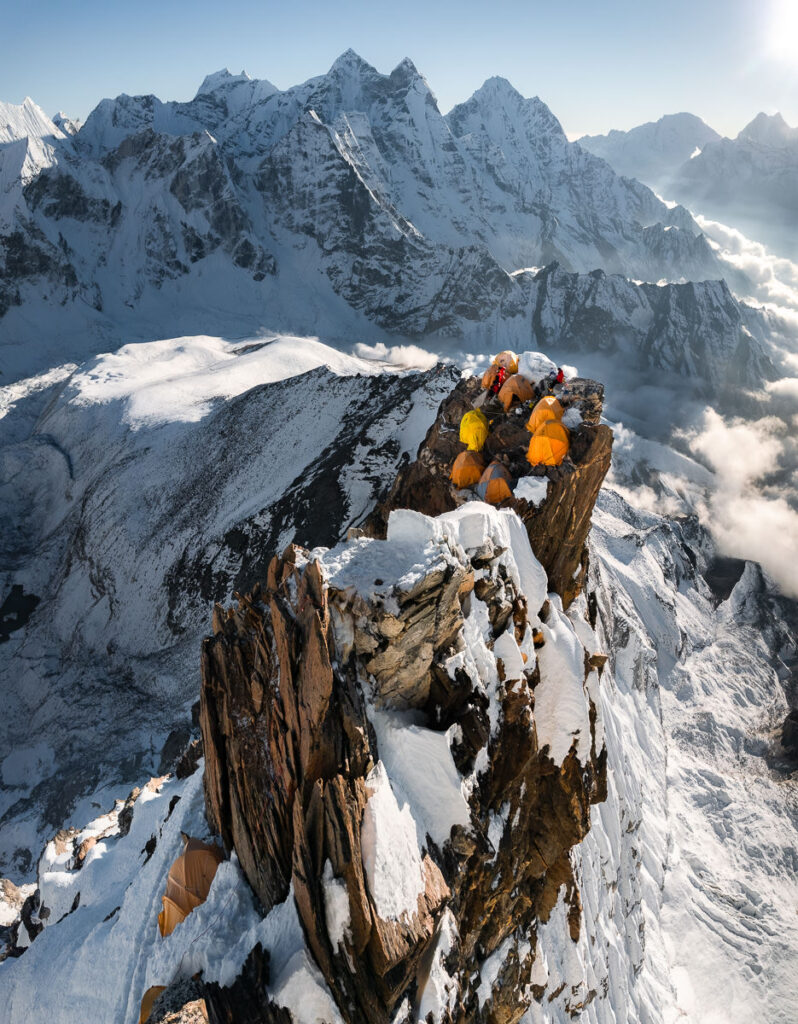
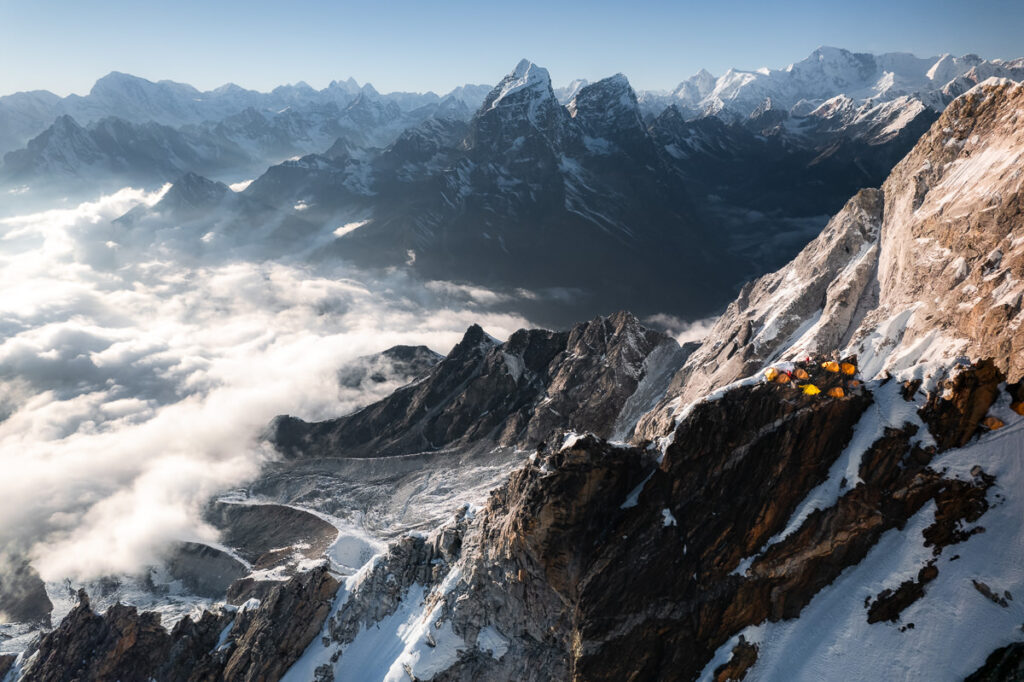
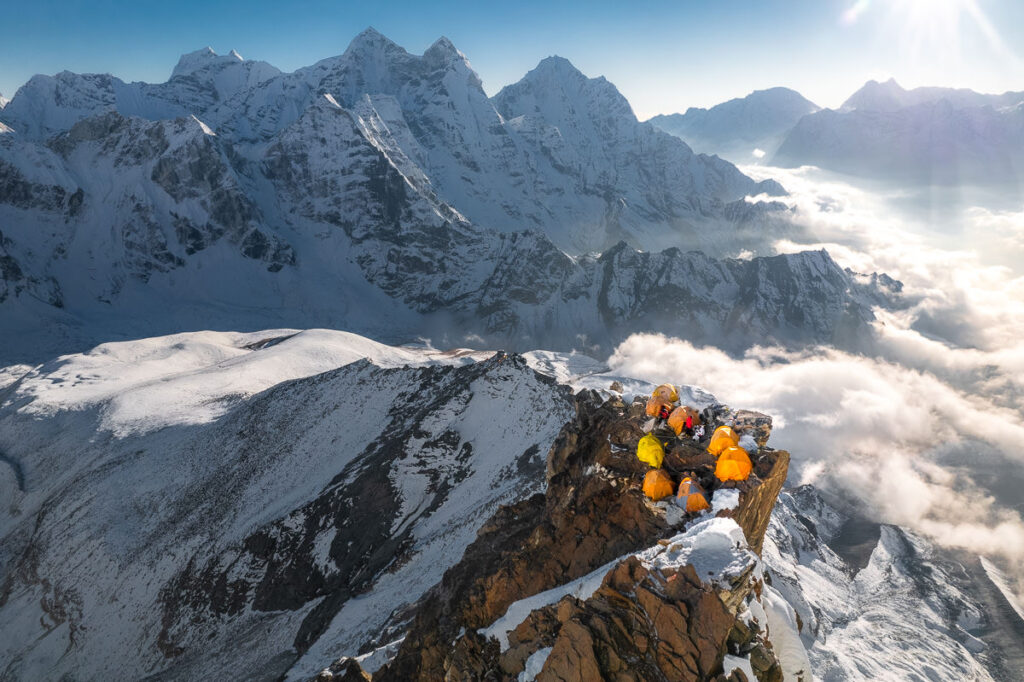
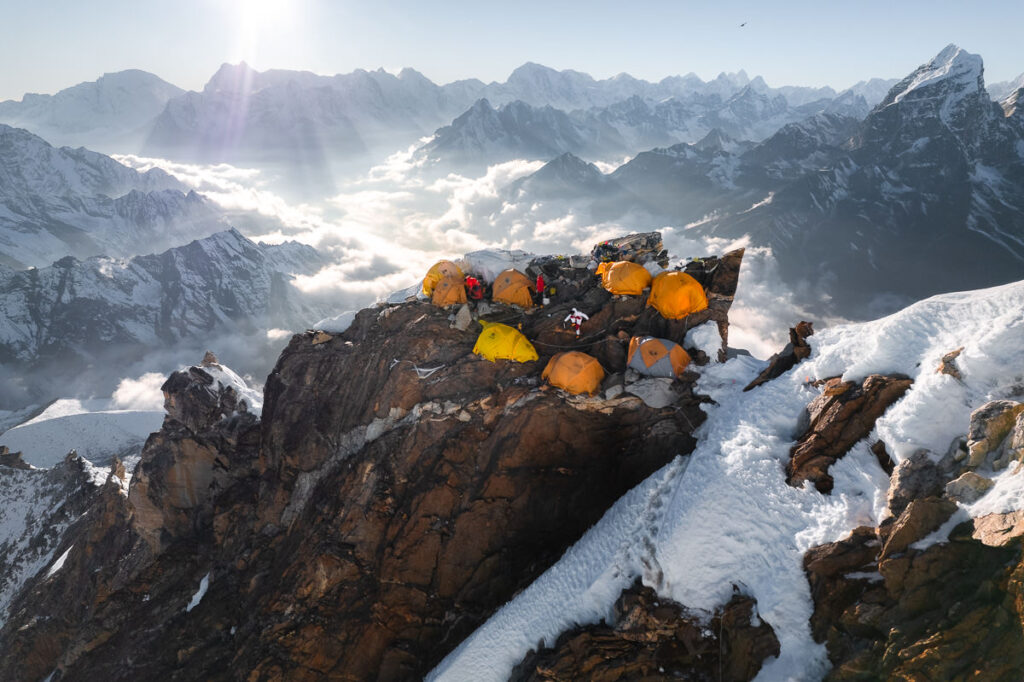
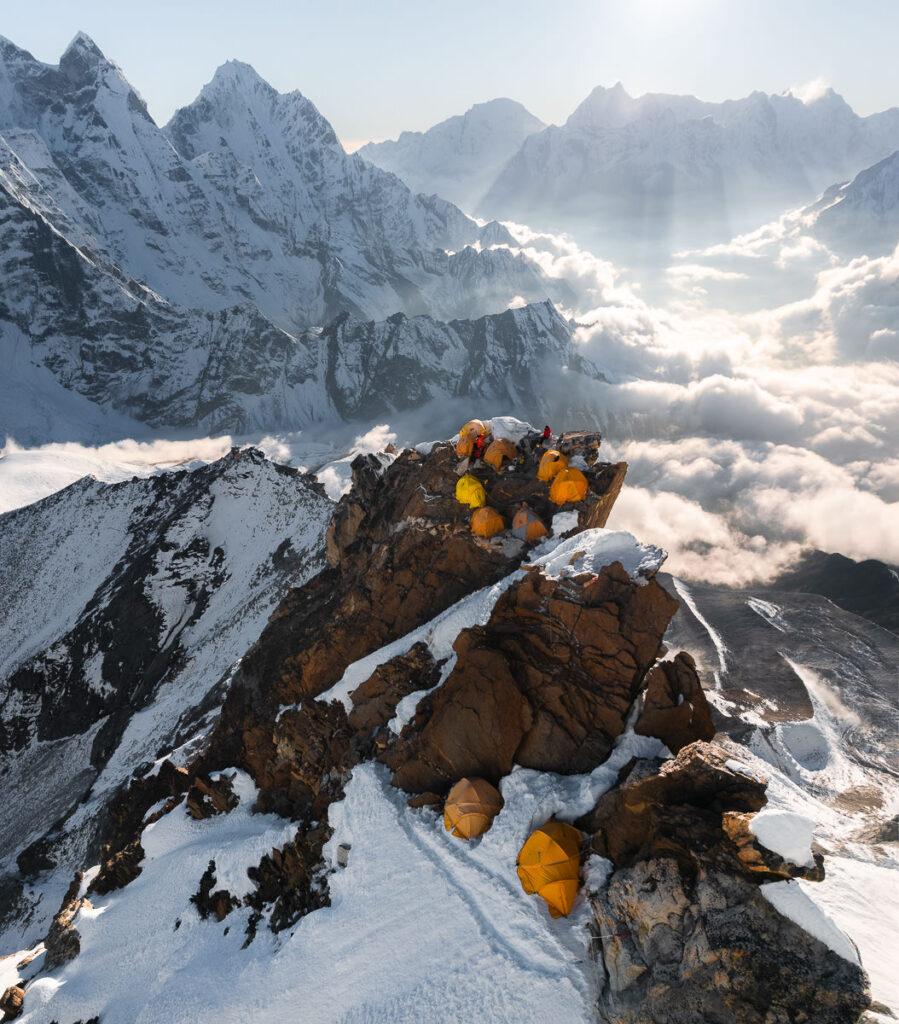
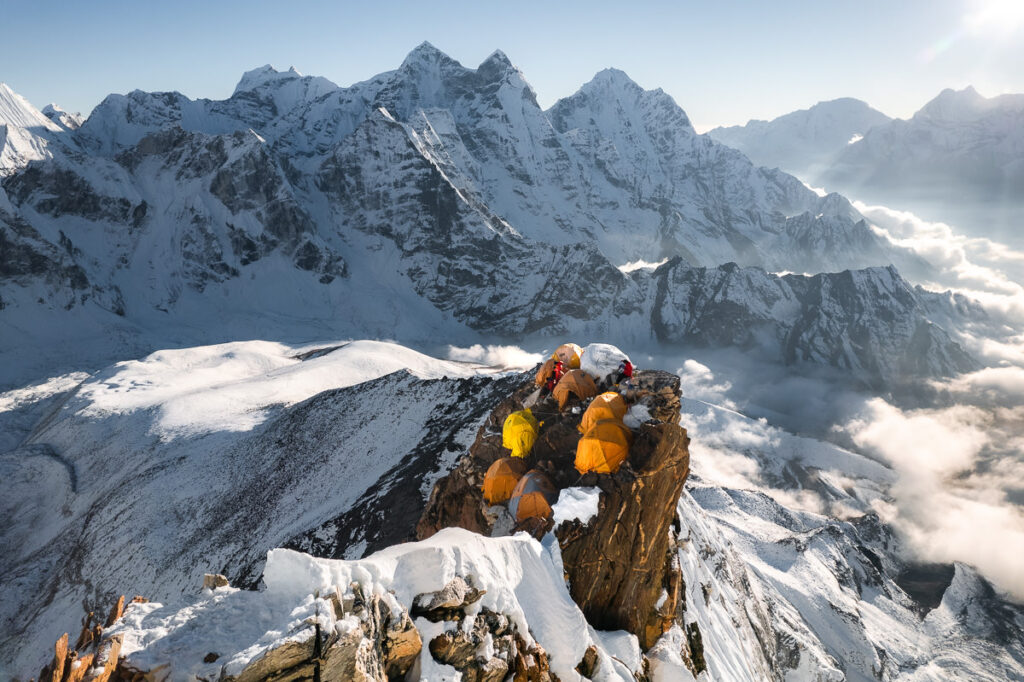
The night slept at Camp Two involved some interesting body contortions shaped like a Tetris block to avoid laying directly on large rocks beneath the tent. However, all went well and we grabbed a valuable night of acclimatization at 6,200m above sea level that would serve us well on our summit push. We headed back down to basecamp in one day to rest up before our summit push.

